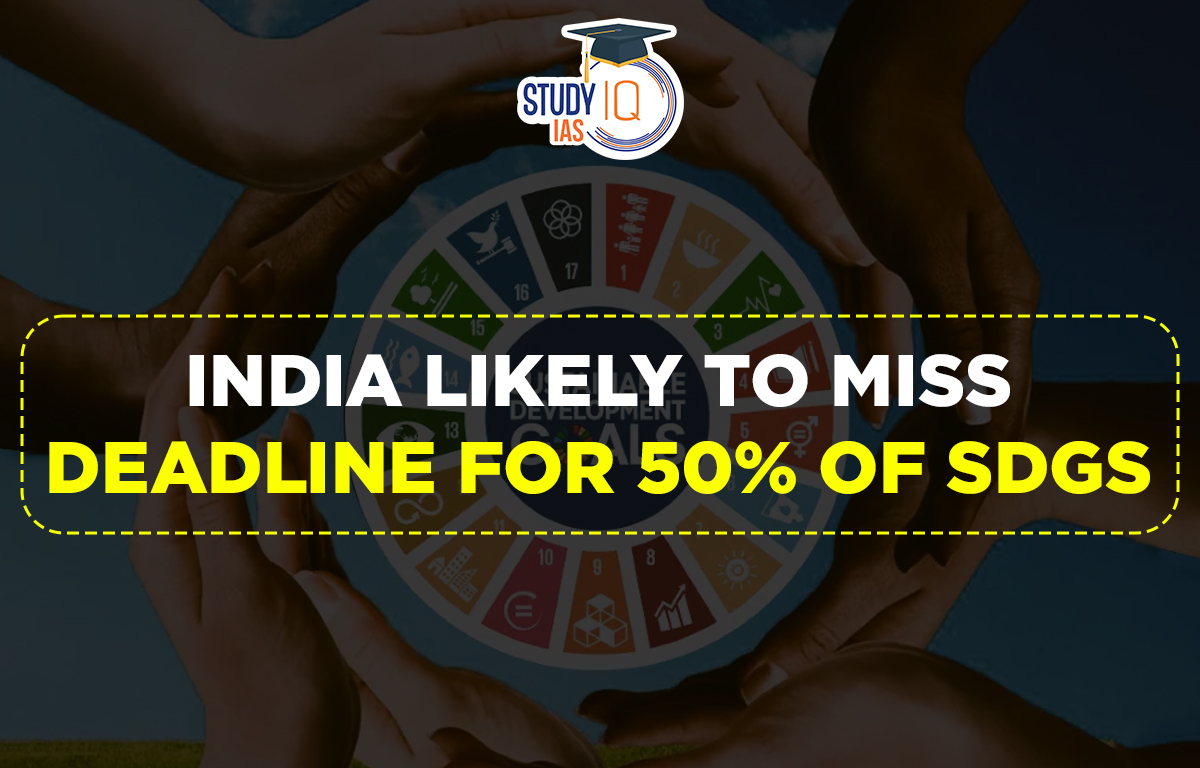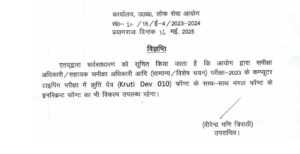Table of Contents
Context: According to a study, India is falling short of meeting more than half of the indicators under the United Nations Sustainable Development Goals (SDGs) seven years before the 2030 deadline.
About Sustainable Development Goals (SDGs)
- The Sustainable Development Goals (SDGs) were adopted by the United Nations in 2015 as a universal call to action to end poverty, protect the planet, and ensure that by 2030 all people enjoy peace and prosperity.
- It is a set of 17 SDGs which recognize that action in one area will affect outcomes in others and that development must balance social, economic, and environmental sustainability.
- SDG Index: In the 2022 SDG Index, India was ranked 121 out of the 163 countries.
- India was ranked 117 in 2020 and 120 in 2021, reflecting a continuous decline in India’s progress on SDG index.
- NITI Aayog is the nodal agency in Government of India for overall coordination and supervision on the Sustainable Development Goals (SDGs).

Highlights of Study
- It is a first mid-line assessment of India’s progress for the 2030 Agenda, measured across 9 goals by identifying 33 key indicators.
- On-Target: India has shown good progress on 13 targets.
- These include bank accounts for women, birth registration, internet use, electricity access, full vaccination, birth registration, and lowering of child marriage among others.
- Maximum number of indicators On-Target for any district is 23, and it is found in the district of Udaipur (Rajasthan).
- About 54 districts are On-Target to meet 17–23 indicators and are largely in Rajasthan, Madhya Pradesh, and Chhattisgarh.
- Off-Target: India is Off-Target for nearly three-fifths of the 33 SDGs indicators.
- These are largely related to four SDG goals: No Poverty (SDG 1), Zero Hunger (SDG 2), Good Health and Well-Being (SDG 3) and Gender Equality (SDG 5).
- The indicators of concern include Access to Basic Services, Poverty, Stunting and Wasting of Children, Anaemia, Child Marriage, Partner Violence, Tobacco Use and Modern Contraceptive Use.
- Every district in India is Off-Target on at least 6 indicators. The districts with the most Off-Target indicators (27 out of 33) are Bijapur (Chhattisgarh), East Jantia Hills (Meghalaya), West Khasi Hills (Meghalaya), and Sepahijala (Tripura).
- India has fallen behind on 19 of 33 indicators.
- District Wise Performance: Over 75% of Indian districts are off target for eight crucial indicators including poverty, anaemia, child marriage domestic violence, stunting and wasting of children, access to essential services, modern contraceptive use and tobacco consumption.
- These districts are concentrated in Madhya Pradesh, Chhattisgarh, Jharkhand, Bihar and Odisha.
- Many districts will never meet the targets on the SDGs even well after 2030.
- Aspirational Districts (ADs): ADs are more likely to meet their target on only 11 out of 33 indicators compared to other districts
- On Anaemia: India would never be able to meet the SDG targets related to Anaemia.
- According to National Family Health Survey (2019-2021), more Indians are anaemic than ever before, with at least 67% of children and 52.2% of women having anaemia.
- On Gender Equality: India will not meet the SDG on Gender Equality by as late as 2090, and for nearly one-third of districts this goal will never be met in the foreseeable future.
- Gloomy Projection: Because of a worsening trend observed between 2016 and 2021, and assuming no course correction occurs, many districts will never meet their SDG targets, even well after 2030.
- India may meet the target of improved water access by 2031, clean fuel for cooking by 2035, lowering teenage pregnancy age by 2039 and partner sexual violence by 2040.
- 11 off-target indicators, including access to basic services and partner violence (physical and sexual), may be met between 2041 and 2062.

Way Forward
- There is an urgent need to increase the momentum on four SDG goals — No Poverty, Zero Hunger, Good Health and Well-Being and Gender Equality.
- Develop a strategic roadmap to ensure success with regards to meeting the SDGs, which should include an honest and transparent assessment of existing GOI programs that are directly or indirectly related to SDGs.
- To formulate new policies related to reducing tobacco consumption which is a key concern in a majority of the districts.
- Localising SDG’s: Building capacities of the State Governments in SDG implementation, monitoring, and further localising at the district and below levels.
- Allocate more resources to the policies that will deliver the most effective return for an extra rupee, dollar or euro.
- Globally, evidence shows that each rupee spent evenly across all 169 targets will deliver Rs 7 of social benefits.
India’s Policies toward SDG’s
- Swachch Bharat Mission (to provide sanitation facilities for every household)
- India is well On-Target to provide universal sanitation to its citizens by 2030, and a majority of its Off-Target districts will achieve their targets by 2035.
- Pradhan Mantri Awaas Yojana (to deliver affordable pucca housing to the poor).
- Pradhan Mantri Sahaj Bijli Har Ghar (to provide universal household electrification)
- Ujjawala Yojana 2.0 (to provide clean cooking fuel to all poor households)
- Jal Jeevan Mission (to provide safe and adequate tapped drinking water to all rural households)
- Beti Bachao Beti Padhao (to curb sex selective abortion and promoting girls education),
- Mahila Shakti Kendra (to support skill development and employment of women)
- Women Entrepreneurship Program (to encourage women to launch business ventures),
- Aspirational Districts (AD) program: AD program has a two-fold aim: to ‘quickly’ and ‘effectively’ transform 112 of the most underdeveloped districts of India.


 UPPSC RO ARO Exam Date 2025 Out: Typing ...
UPPSC RO ARO Exam Date 2025 Out: Typing ...
 Maharashtra Bill to Curb Urban Naxalism,...
Maharashtra Bill to Curb Urban Naxalism,...
 International Maize and Wheat Improvemen...
International Maize and Wheat Improvemen...





















